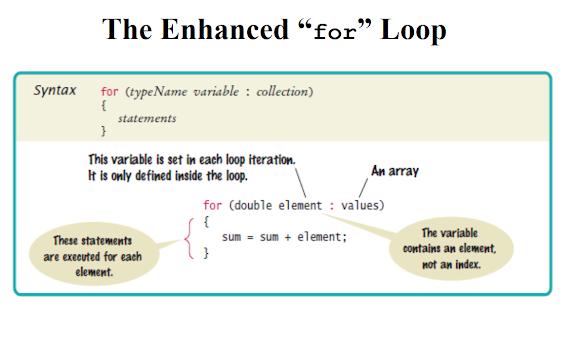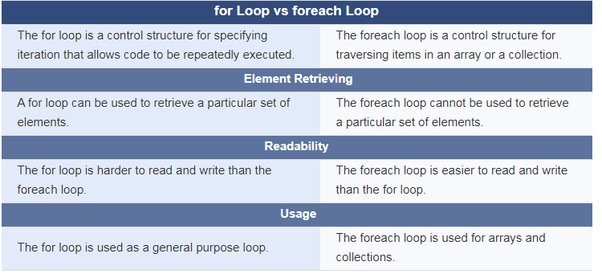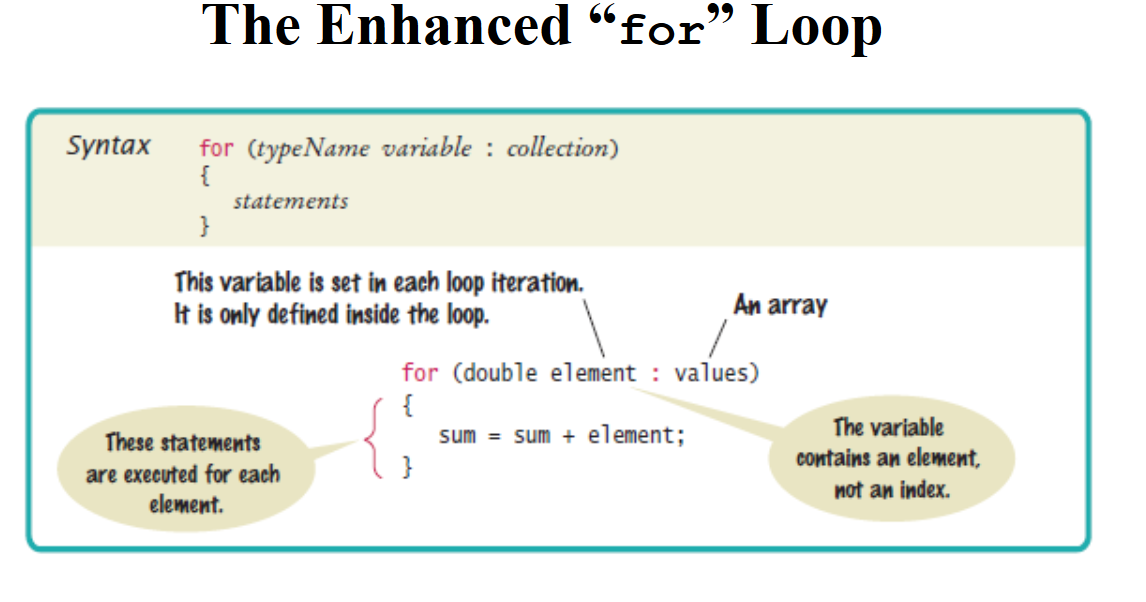difference between for loop and enhanced for loop in java
difference between for loop and enhanced for loop in java

I can see that you're eager to learn more about Java programming, so let's dive into the world of loops!
In Java, a for loop is used to execute a block of code repeatedly based on a condition. It consists of three parts:


The traditional for loop in Java looks like this:
for (initialization; condition; increment/decrement) {// code to be executed
}
Here's an example of using a for loop to print numbers from 1 to 5:
int i = 1;for (; i <= 5; i++) {
System.out.println(i);
}
This will output: 1, 2, 3, 4, and 5.
Now, let's talk about the enhanced for loop (also known as the "foreach" loop). Introduced in Java 5 (Java 1.5), this loop is used to iterate over a collection or array.
The syntax for an enhanced for loop is:
for (declaration : expression) {// code to be executed
}
Here, expression can be any type of iterable, such as a list, set, or array. The declaration part declares the variable(s) that will take on the values from the iterable.
Let's see an example:
String[] colors = {"Red", "Green", "Blue"};for (String color : colors) {
System.out.println(color);
}
This will output: Red, Green, and Blue.
Key differences between traditional for loops and enhanced for loops:
When to use each:
Traditionalfor loops: When you need to keep track of an index, perform custom increments or decrements, or have more complex looping conditions. Enhanced for loops: When you're working with collections or arrays, and don't need explicit control over the iteration process.
In summary, both traditional and enhanced for loops are useful in their own ways. The choice between them depends on the specific requirements of your program and your personal programming style.
I hope this helps clarify the differences between these two types of for loops!
enhanced for loop java 2d array

Now, let's dive into enhanced for loops and 2D arrays in Java!
A traditional for loop in Java looks like this:
for (int i = 0; i < arr.length; i++) {System.out.println(arr[i]);
}
This loop iterates over each element of a 1D array arr. However, when dealing with 2D arrays, you might want to use an enhanced for loop to simplify the process.
An enhanced for loop in Java is denoted by the keyword for followed by parentheses containing the following elements:
var: type) An optional condition
Here's how you can use it to iterate over a 2D array:
int[][] arr = {{1, 2, 3},
{4, 5, 6},
{7, 8, 9}
};
for (int[] row : arr) {
for (int val : row) {
System.out.print(val + " ");
}
System.out.println();
}
In this example:
arr is the 2D array you want to iterate over row and val are declared variables that represent each row and element in the array, respectively
By using enhanced for loops, you can avoid explicit indexing and focus on the logic of your code. This syntax is particularly useful when working with multidimensional arrays or collections.





























